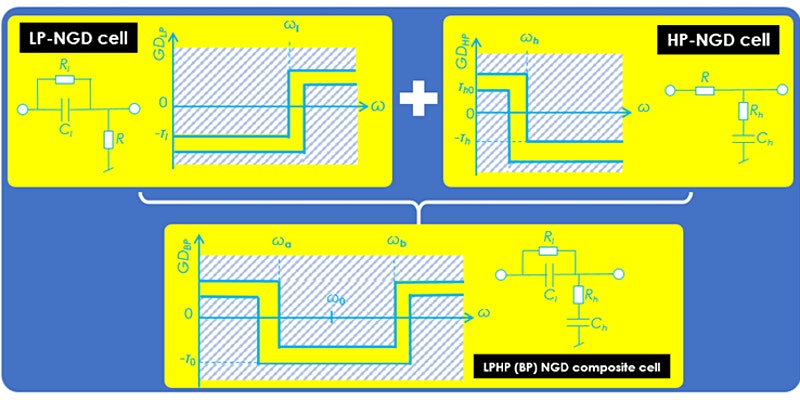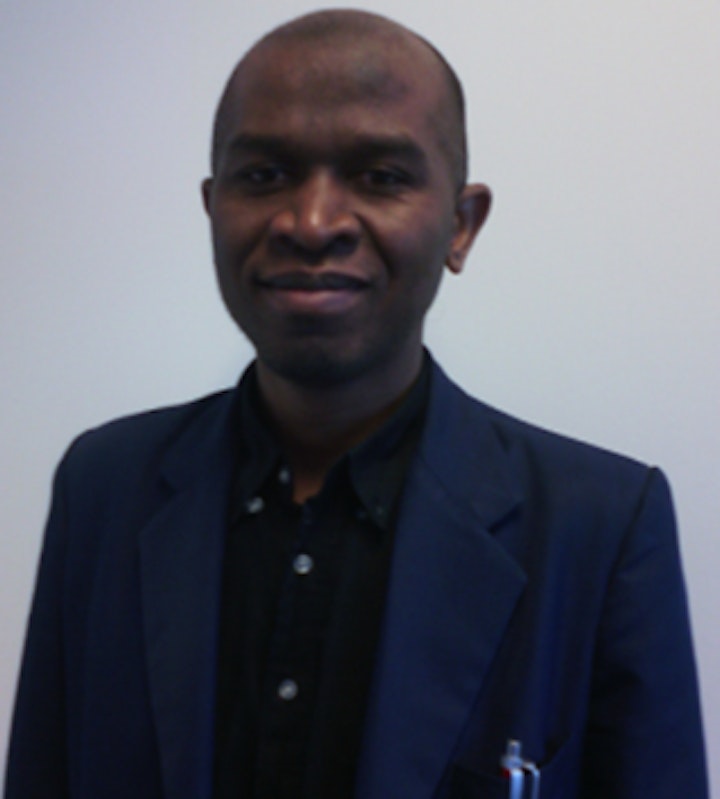Circuit theory of LPHP-NGD composite for inductor less BP-NGD circuit by Dr. Blaise Ravelo

"Circuit theory of LPHP-NGD composite for inductor less BP-NGD circuit"
Dr. Blaise Ravelo, Nanjing University of Information Science & Technology, School of Electronic & Information Engineering Nanjing, China 210044
Event Organized By:
Circuits and Systems Society (CASS) of the IEEE Santa Clara Valley Section
PROGRAM:
6:30 - 7:00 PM Networking/Intro 7:00 - 7:50 PM Lecture7:50 - 8:00 PM Q&A/Adjourn
Abstract:
This research work webinar introduces an original innovative theory not familiar to most of Circuit-And-System (CAS) engineers. The original circuit theory is focused on inductor less negative group delay (NGD) topology. The considered passive cell comprised of resistor and capacitor elements without inductor operates as a bandpass (BP) NGD function. The particular specifications of NGD functions are defined. The BP-NGD fully lumped circuits generally available in the literature operate with resonant RLC-network. For the introduction, a lumped circuit was first time identified to exhibit the BP-NGD behavior without the presence of inductive component. The inductor less BP-NGD topology is inspired from the combination of low-pass (LP) and high-pass (HP) NGD passive cells. Therefore, an original LPHP-NGD composite topology is obtained. The identified BP-NGD topology is constituted only by passive RC-networks. Then, theoretical development of BP-NGD analysis is explored. The inductor less circuit theory starts with the identification of BP-NGD canonical form. Then, the expressions of NGD value, center frequency and attenuation in function of RC-network parameters are established. The BP-NGD synthesis equations allowing to determine the resistor and capacitor elements are derived. Proofs-of-concept are designed and prototypes are fabricated to verify the effectiveness of the developed LPHP-NGD composite theory. To validate the developed original circuit theory, two prototypes of RC-network based LPHP-NGD composite were designed, fabricated, simulated and tested. The two prototypes were synthesized with respect to two different NGD center frequencies 13.5 MHz and 22 MHz. As expected, the calculated, simulated and measurement results are in very good agreement with NGD value of about some negative nanoseconds. In the future, the characterized inductor less topology enable to overcome the traditional limitations of RLC-network based BP-NGD circuits because of inductance self-effect limitation.
Bio:
Dr. Ravelo (Google scholar h-index(2021)=23 and i-index(2021)=64) is a full professor at NUIST & researcher in Multiphysics and electronics engineering. He is a pioneer of the negative group delay (NGD) concept about negative-time signal travelling physical space. He was research director of 11 PhD students (8 defended), postdocs, research engineers and Master internships. He is ranked in Top 2% world’s scientists based on year 2019 by Stanford University, US. With European, Asian, American and African partners, he is actively involved and contributes on several international research projects. He is member of IET Electronics Letters editorial board as circuit & system subject editor. He is (co-)authors of more than 350 scientific research papers in new technologies published in int. conf. and journals. He is lecturer on circuit & system theory, STEM (science, technology, engineering, and math) and applied physics.
Zoom Broadcast:
Amit Jha is inviting you to a scheduled Zoom meeting.
Topic: Amit Jha's Zoom Meeting
Time: Aug 26, 2021 06:30 PM Pacific Time (US and Canada)
Join Zoom Meeting
https://us02web.zoom.us/j/81719625637?pwd=Y2lVWkY0blhsQTRuOS9NeGRXWWtJQT09
Meeting ID: 817 1962 5637
Passcode: 508957
One tap mobile
+16699006833,,81719625637#,,,,*508957# US (San Jose)
+13462487799,,81719625637#,,,,*508957# US (Houston)
Dial by your location
+1 669 900 6833 US (San Jose)
+1 346 248 7799 US (Houston)
+1 253 215 8782 US (Tacoma)
+1 929 436 2866 US (New York)
+1 301 715 8592 US (Washington DC)
+1 312 626 6799 US (Chicago)
Meeting ID: 817 1962 5637
Passcode: 508957
Find your local number: https://us02web.zoom.us/u/km06Jd2rL
Admission Fee:
All admissions free. Suggested donations:
Non-IEEE: $5, Students (non-IEEE): $3, IEEE Members (not members of CASS or SSCS): $3

Date and Time
Location
Hosts
Registration
-
 Add Event to Calendar
Add Event to Calendar
Speakers
Dr. Ljiljana Trajkovic
Data Mining and Machine Learning for Analysis of Network Traffic
"Data Mining and Machine Learning for Analysis of Network Traffic", Distinguished Lecture
Dr. Ljiljana Trajkovic, Life Fellow, IEEE, Simon Fraser University, B.C
Event Organized By:
Circuits and Systems Society (CASS) of the IEEE Santa Clara Valley Section
PROGRAM:
6:55 - 7:00 PM Intro 7:00 - 7:50 PM Lecture7:50 - 8:00 PM Q&A/Adjourn
Abstract:
Collection and analysis of data from deployed networks is essential for understanding modern communication networks. Data mining and statistical analysis of network data are often employed to determine traffic loads, analyze patterns of users' behavior, and predict future network traffic while various machine learning techniques proved valuable for predicting anomalous traffic behavior. In described case studies, traffic traces collected from various deployed networks and the Internet are used to characterize and model network traffic, analyze Internet topologies, and classify network anomalies.
Biography:
Ljiljana Trajkovic received the Dipl. Ing. degree from University of Pristina, Yugoslavia, in 1974, the M.Sc. degrees in electrical engineering and computer engineering from Syracuse University, Syracuse, NY, in 1979 and 1981, respectively, and the Ph.D. degree in electrical engineering from University of California at Los Angeles, in 1986.She is currently a Professor in the School of Engineering Science at Simon Fraser University, Burnaby, British Columbia, Canada. From 1995 to 1997, she was a National Science Foundation (NSF) Visiting Professor in the Electrical Engineering and Computer Sciences Department, University of California, Berkeley. She was a Research Scientist at Bell Communications Research, Morristown, NJ, from 1990 to 1997, and a Member of the Technical Staff at AT&T Bell Laboratories, Murray Hill, NJ, from 1988 to 1990. Her research interests include high-performance communication networks, control of communication systems, computer-aided circuit analysis and design, and theory of nonlinear circuits and dynamical systems.Dr. Trajkovic served as IEEE Division X Delegate/Director (2019–2020) and IEEE Division X Delegate-Elect/Director-Elect (2018). She served as Senior Past President (2018–2019), Junior Past President (2016–2017), President (2014–2015), President-Elect (2013), Vice President Publications (2012–2013, 2010–2011), Vice President Long-Range Planning and Finance (2008–2009), and a Member at Large of the Board of Governors (2004–2006) of the IEEE Systems, Man, and Cybernetics Society. She served as 2007 President of the IEEE Circuits and Systems Society and a member of its Board of Governors (2004–2005, 2001–2003). She is Chair of the IEEE Circuits and Systems Society joint Chapter of the Vancouver/Victoria Sections. She was Chair of the IEEE Technical Committee on Nonlinear Circuits and Systems (1998). She was General Co-Chair of SMC 2020 and SMC 2020 Workshop on BMI Systems and served as General Co-Chair of SMC 2019 and SMC 2018 Workshops on BMI Systems, SMC 2016, and HPSR 2014, Special Sessions Co-Chair of SMC 2017, Technical Program Chair of SMC 2017 and SMC 2016 Workshops on BMI Systems, Technical Program Co-Chair of ISCAS 2005, and Technical Program Chair and Vice General Co-Chair of ISCAS 2004. She serves as Editor-in-Chief of the IEEE Transactions on Human-Machine Systems (2021–2023) and served as an Associate Editor of the IEEE Transactions on Circuits and Systems (Part I) (2004–2005, 1993–1995), the IEEE Transactions on Circuits and Systems (Part II) (2018, 2002–2003, 1999–2001), and the IEEE Circuits and Systems Magazine (2001–2003). She is a Distinguished Lecturer of the IEEE Systems, Man, and Cybernetics Society (2020–2021) and the IEEE Circuits and Systems Society (2020–2021, 2010–2011, 2002–2003). She is a Professional Member of IEEE-HKN and a Life Fellow of the IEEE.
Agenda
"Circuit theory of LPHP-NGD composite for inductor less BP-NGD circuit"
Dr. Blaise Ravelo, Nanjing University of Information Science & Technology, School of Electronic & Information Engineering Nanjing, China 210044
Event Organized By:
Circuits and Systems Society (CASS) of the IEEE Santa Clara Valley Section
PROGRAM:
6:30 - 7:00 PM Networking/Intro 7:00 - 7:50 PM Lecture7:50 - 8:00 PM Q&A/Adjourn
Abstract:
This research work webinar introduces an original innovative theory not familiar to most of Circuit-And-System (CAS) engineers. The original circuit theory is focused on inductor less negative group delay (NGD) topology. The considered passive cell comprised of resistor and capacitor elements without inductor operates as a bandpass (BP) NGD function. The particular specifications of NGD functions are defined. The BP-NGD fully lumped circuits generally available in the literature operate with resonant RLC-network. For the introduction, a lumped circuit was first time identified to exhibit the BP-NGD behavior without the presence of inductive component. The inductor less BP-NGD topology is inspired from the combination of low-pass (LP) and high-pass (HP) NGD passive cells. Therefore, an original LPHP-NGD composite topology is obtained. The identified BP-NGD topology is constituted only by passive RC-networks. Then, theoretical development of BP-NGD analysis is explored. The inductor less circuit theory starts with the identification of BP-NGD canonical form. Then, the expressions of NGD value, center frequency and attenuation in function of RC-network parameters are established. The BP-NGD synthesis equations allowing to determine the resistor and capacitor elements are derived. Proofs-of-concept are designed and prototypes are fabricated to verify the effectiveness of the developed LPHP-NGD composite theory. To validate the developed original circuit theory, two prototypes of RC-network based LPHP-NGD composite were designed, fabricated, simulated and tested. The two prototypes were synthesized with respect to two different NGD center frequencies 13.5 MHz and 22 MHz. As expected, the calculated, simulated and measurement results are in very good agreement with NGD value of about some negative nanoseconds. In the future, the characterized inductor less topology enable to overcome the traditional limitations of RLC-network based BP-NGD circuits because of inductance self-effect limitation.
Bio:
Dr. Ravelo (Google scholar h-index(2021)=23 and i-index(2021)=64) is a full professor at NUIST & researcher in Multiphysics and electronics engineering. He is a pioneer of the negative group delay (NGD) concept about negative-time signal travelling physical space. He was research director of 11 PhD students (8 defended), postdocs, research engineers and Master internships. He is ranked in Top 2% world’s scientists based on year 2019 by Stanford University, US. With European, Asian, American and African partners, he is actively involved and contributes on several international research projects. He is member of IET Electronics Letters editorial board as circuit & system subject editor. He is (co-)authors of more than 350 scientific research papers in new technologies published in int. conf. and journals. He is lecturer on circuit & system theory, STEM (science, technology, engineering, and math) and applied physics.
Zoom Broadcast:
Amit Jha is inviting you to a scheduled Zoom meeting.
Topic: Amit Jha's Zoom Meeting
Time: Aug 26, 2021 06:30 PM Pacific Time (US and Canada)
Join Zoom Meeting
https://us02web.zoom.us/j/81719625637?pwd=Y2lVWkY0blhsQTRuOS9NeGRXWWtJQT09
Meeting ID: 817 1962 5637
Passcode: 508957
One tap mobile
+16699006833,,81719625637#,,,,*508957# US (San Jose)
+13462487799,,81719625637#,,,,*508957# US (Houston)
Dial by your location
+1 669 900 6833 US (San Jose)
+1 346 248 7799 US (Houston)
+1 253 215 8782 US (Tacoma)
+1 929 436 2866 US (New York)
+1 301 715 8592 US (Washington DC)
+1 312 626 6799 US (Chicago)
Meeting ID: 817 1962 5637
Passcode: 508957
Find your local number: https://us02web.zoom.us/u/km06Jd2rL
Admission Fee:
All admissions free. Suggested donations:
Non-IEEE: $5, Students (non-IEEE): $3, IEEE Members (not members of CASS or SSCS): $3


